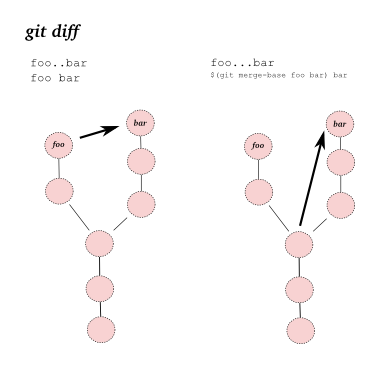tl;dr
The correct syntax to rebase B on top of A using git rebase --onto in your case is:
git checkout B
git rebase --onto A B^
or rebase B on top of A starting from the commit that is the parent of B referenced with B^ or B~1.
If you're interested in the difference between git rebase <branch> and git rebase --onto <branch> read on.
The Quick: git rebase
git rebase <branch> is going to rebase the branch you currently have checked out, referenced by HEAD, on top of the latest commit that is reachable from <branch> but not from HEAD.
This is the most common case of rebasing and arguably the one that requires less planning up front.
Before After
A---B---C---F---G (branch) A---B---C---F---G (branch)
\ \
D---E (HEAD) D---E (HEAD)
In this example, F and G are commits that are reachable from branch but not from HEAD. Saying git rebase branch will take D, that is the first commit after the branching point, and rebase it (i.e. change its parent) on top of the latest commit reachable from branch but not from HEAD, that is G.
The Precise: git rebase --onto with 2 arguments
git rebase --onto allows you to rebase starting from a specific commit. It grants you exact control over what is being rebased and where. This is for scenarios where you need to be precise.
For example, let's imagine that we need to rebase HEAD precisely on top of F starting from E. We're only interested in bringing F into our working branch while, at the same time, we don't want to keep D because it contains some incompatible changes.
Before After
A---B---C---F---G (branch) A---B---C---F---G (branch)
\ \
D---E---H---I (HEAD) E---H---I (HEAD)
In this case, we would say git rebase --onto F D. This means:
Rebase the commit reachable from HEAD whose parent is D on top of F.
In other words, change the parent of E from D to F. The syntax of git rebase --onto is then git rebase --onto <newparent> <oldparent>.
Another scenario where this comes in handy is when you want to quickly remove some commits from the current branch without having to do an interactive rebase:
Before After
A---B---C---E---F (HEAD) A---B---F (HEAD)
In this example, in order to remove C and E from the sequence you would say git rebase --onto B E, or rebase HEAD on top of B where the old parent was E.
The Surgeon: git rebase --onto with 3 arguments
git rebase --onto can go one step further in terms of precision. In fact, it allows you to rebase an arbitrary range of commits on top of another one.
Here's an example:
Before After
A---B---C---F---G (branch) A---B---C---F---G (branch)
\ \
D---E---H---I (HEAD) E---H (HEAD)
In this case, we want to rebase the exact range E---H on top of F, ignoring where HEAD is currently pointing to. We can do that by saying git rebase --onto F D H, which means:
Rebase the range of commits whose parent is D up to and including H on top of F.
The syntax of git rebase --onto with a range of commits then becomes git rebase --onto <newparent> <oldparent> <until>. The trick here is remembering that the commit referenced by <until> is included in the range and will become the new HEAD after the rebase is complete.


git rebase --onto A Aafter checking outB– Pyromagnetic